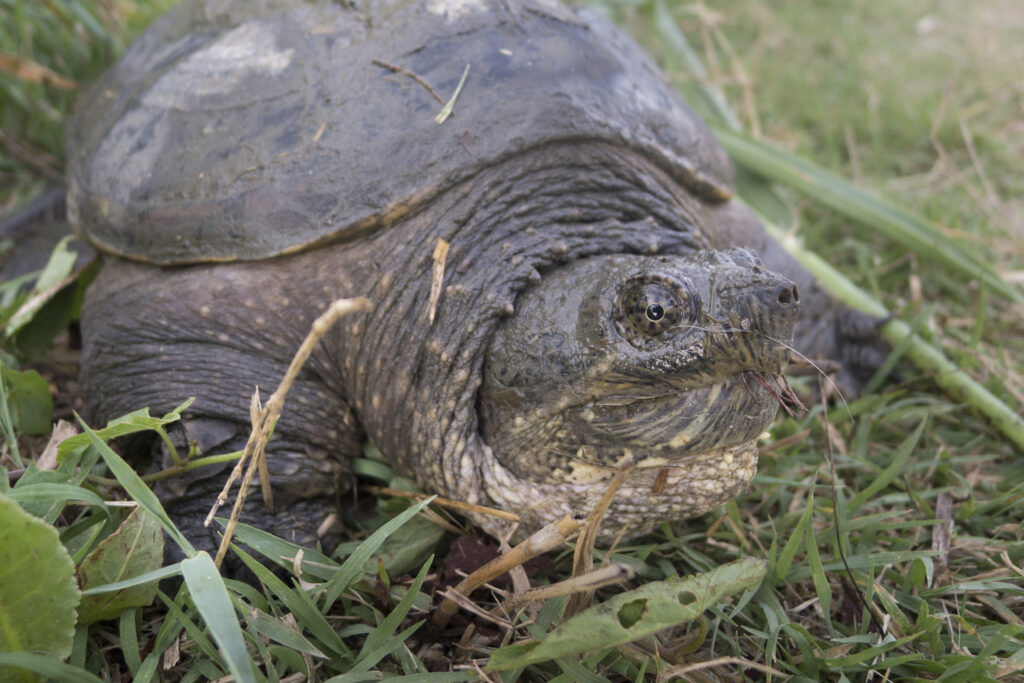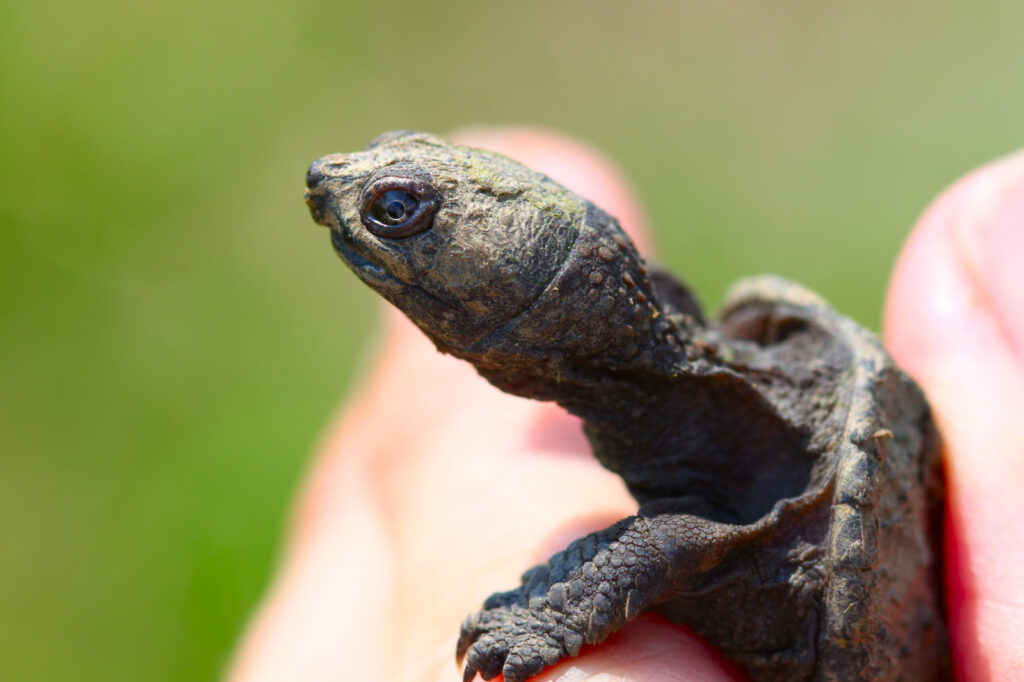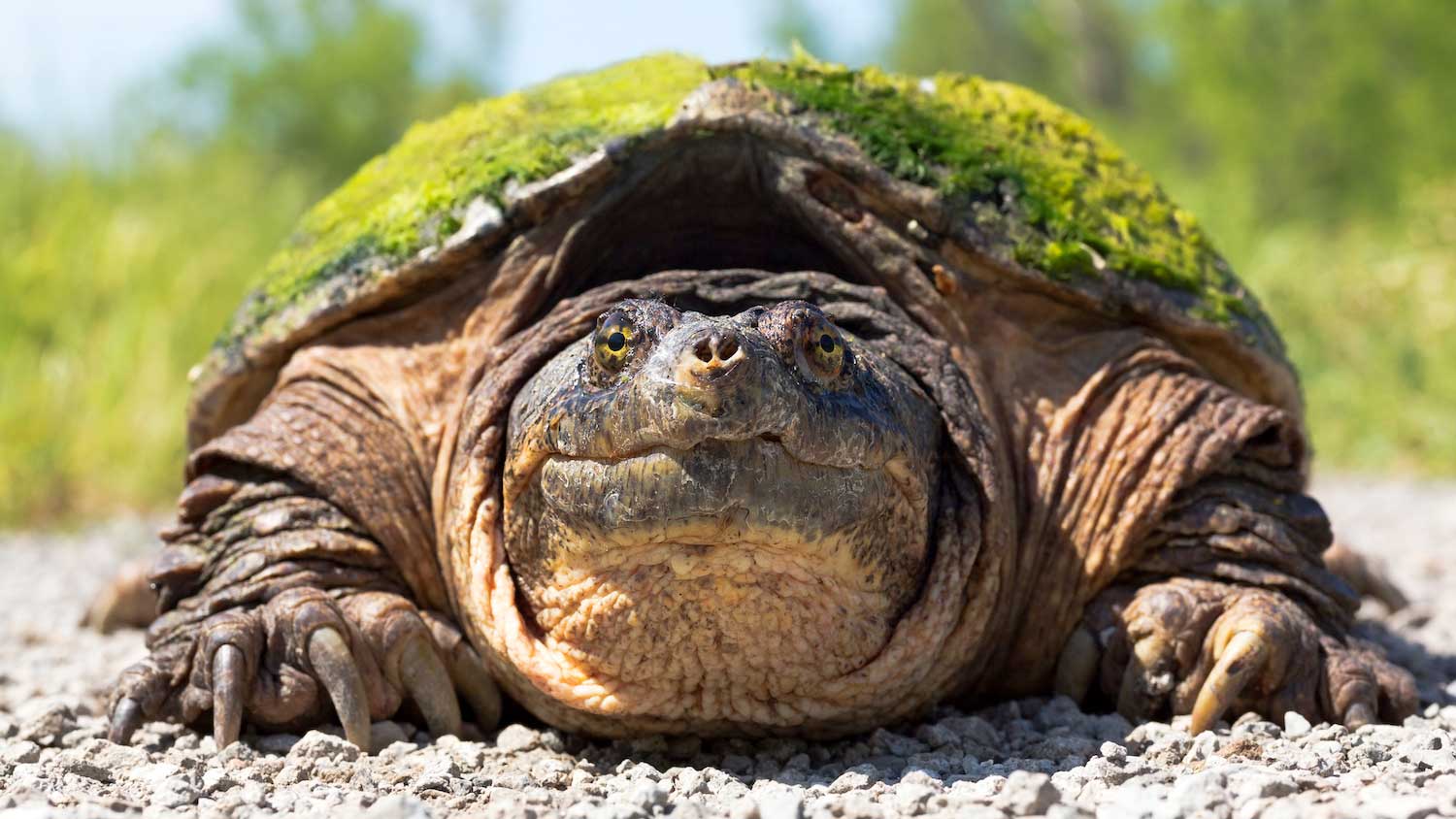Hey there! Are you curious about the age of snapping turtle by size? Well, you’ve come to the right place.
In this article, we’ll give you a detailed guide on how to determine age based on size for hatchling, juvenile and adult snapping turtles. We’ll also provide information on factors that can affect growth rate, as well as other ways to determine age.
Finally, we’ll discuss the conservation status of these fascinating creatures. So grab your reading glasses and let’s dive in!
Table of Contents
Hatchling Snapping Turtles

Hatchlin’ snappin’ turtles are tiny, and they need special care to thrive! These hatchlings come out of their eggs after a period of incubation, ranging from 55-125 days depending on the temperature.
Their shells are soft and can range in color from dark brown to olive green, with yellow spots all over. Even though they are very small when they first emerge, these little creatures still have their signature snapping turtle features – a long neck and tail that make them look much larger than they really are!
These hatchlings require extra TLC due to their size. They must be kept in an environment that is warm enough for them to grow and develop properly. It’s important to keep them hydrated by providing plenty of clean water for swimming, as well as offering a balanced diet of insects or other small invertebrates for protein.
With proper care, hatchling snapping turtles can grow quickly into healthy adults!
Juvenile Snapping Turtles

You may be wondering how to determine if a turtle is a juvenile; well, this section provides the answer.
Juvenile snapping turtles can typically be identified by their size—they’re usually 4-7 inches long and weigh between 0.8-1.5 pounds. They have olive or brown carapaces (tops) with yellow stripes, and they tend to have a bright yellow line that runs along the edge of their carapace as well.
Juvenile snapping turtles have different dietary habits than adult snapping turtles; they prefer a diet of aquatic invertebrates such as crayfish, snails, clams, worms, frogs, fish, and even small birds when available.
They also require different habitat requirements than adults; juveniles need shallow water with lots of vegetation for hiding from predators and plenty of places to bask in the sun.
Adult Snapping Turtles
As an adult, snapping turtles can reach up to 20 inches long and weigh as much as 35 pounds, making them a formidable presence in the water.
They have a longer lifespan than juveniles, with some living as long as 70 years!
Adult snapping turtles require more space than their juvenile counterparts and prefer shallow bodies of water such as streams, ponds, or lakes.
When it comes to habitat selection, adults prefer areas with plenty of vegetation for cover and nesting sites.
During mating season in late spring and summer months, male snapping turtles become highly territorial.
They will fight off other males that enter their territory in order to protect the females they are courting.
Females build nests near the shoreline of their chosen body of water and lay anywhere from 20-50 eggs at a time.
Age Of Snapping Turtle By Size: Factors that Impact Growth Rate
Growth rate can be greatly influenced by the environmental conditions you find yourself in, so be sure to take note of your surroundings and stay alert if you want to reach your full potential!
Snapping turtles are especially vulnerable to habitat loss due to their slow-moving nature, making them more susceptible to predators. They also struggle with climate change as it throws off their normal migratory patterns.
To ensure optimal growth rates for a snapping turtle, it’s important that they have access to ample food resources and a safe environment free from predators or contaminants.
The amount of water available for a snapping turtle also has an impact on its growth rate. Warmer waters mean faster growth rates, while colder waters will cause slower growth rates. Additionally, the quality of the water plays an important role—turtles living in cleaner bodies of water tend to grow quicker than those found in polluted areas.
Adequate sunlight exposure is also essential for healthy growth and development. Therefore, if you provide your pet with all the necessary factors required for healthy development, then you’ll likely witness rapid growth and increased size over time!
How to Determine Age by Size
By monitoring your turtle’s size, you can get a good idea of their age and ensure they’re growing as expected.
One way to determine the age of a snapping turtle is by measuring its carapace, or shell. Different species have different patterns on their shells, which can indicate the age of the turtle. For example, young turtles may have scutes that are lighter in color than older ones, while others may have more distinct ridges that show with age.
Additionally, adult snappers tend to be much larger than younger ones. So, if you know what size an adult should be for its particular species, this can help you narrow down the age range of your pet too. Another way to estimate a snapping turtle’s age is by looking at its plastron, or underside shell pattern.
Just like with the carapace, different species will have various markings. So, comparing it to similar aged turtles from other sources can give you a better idea of your pet’s exact age. Lastly, examining claws and toes is another aging method that could provide some insight into how old your snapping turtle really is!
Claws and toes become thicker and wider with time. So, observing these features may also be helpful when determining your pet’s age.
Other Ways to Determine Age
You can take a look at your pet’s claws and toes to get an idea of how long they’ve been around – it’s as simple as that! Allusion to the passing of time will help you understand their age without needing a detailed guide.
There are other ways to determine the age of snapping turtles that don’t involve size. For example, you can observe shell growth over time, which is indicative of a turtle’s age. You can also look out for seasonal migration patterns or hibernation habits, both of which can give you clues into how old your turtle might be.
Another way to tell is by noting the presence or absence of certain behaviors – younger turtles tend to swim more vigorously than older ones, and they may also act differently when approaching food sources or potential predators. Younger turtles are usually more curious and active than their older counterparts.
Additionally, since snapping turtles typically reach sexual maturity between 6-8 years old, if you see any signs of mating behavior then this could indicate that your pet is fully grown.
Conservation Status of Snapping Turtles
Knowing the conservation status of your pet is important, so be sure to check out how endangered snapping turtles are in your area!
It’s no secret that climate change and habitat loss can have devastating effects on any species, and snapping turtles certainly aren’t immune. Unfortunately, some populations of this unique reptile are at risk due to a combination of human activities such as pollution, overharvesting for food or pets, road mortality, and nest predation by non-native predators.
In addition, changes in land use have resulted in the loss of suitable habitat for these creatures which can further exacerbate their decline.
It’s important to remember that our actions have consequences, and it’s up to us to do our part in helping protect these animals from extinction. Thankfully, there is still time to act if we take steps now towards protecting our environment and conserving habitats where they live.
There are also things you can do directly, like supporting organizations that work towards turtle conservation or even adopting a pet turtle yourself! Every little bit helps when it comes to preserving wildlife for future generations – so let’s all do what we can today!
Frequently Asked Questions
How long can a snapping turtle live?
Do you ever wonder how long a snapping turtle can live? Well, the answer to that question depends on many factors.
Breeding behavior, hibernation cycles, and even environmental conditions all play an important role in determining a snapping turtle’s lifespan.
On average, these turtles can live anywhere from 20-80 years with proper care and attention.
With that being said, it’s possible for them to outlive their human owners if given the chance!
Their unique traits make them both fascinating and amazing creatures to observe and appreciate.
What do snapping turtles eat?
Snapping turtles have a varied diet that includes both plants and animals. They’ll feed on whatever they can find, from aquatic vegetation to insects, mollusks, amphibians, fish, reptiles, birds, and small mammals.
Though they may be more aggressive when snatching food in the water than on land, their feeding habits remain consistent regardless of their environment. Snapping turtles are omnivorous creatures that adapt to their local environment and its available resources.
With an array of food sources at their disposal, these fascinating creatures make remarkable dining companions!
Are snapping turtles dangerous?
Are snapping turtles dangerous? That depends on your definition of ‘dangerous’.
Snapping turtles are not necessarily aggressive, but they’ll use their powerful jaws and sharp beak to protect themselves if threatened. They may also use their long claws and strong tail muscles to defend against predators. Their behavior is instinctual and designed for self-defense rather than aggression.
Although it’s best to keep your distance from a snapping turtle, you shouldn’t feel scared if you do encounter one in the wild – just respect its space as it defends itself with its natural defense mechanisms.
How big do snapping turtles get?
You may be wondering just how big snapping turtles can get. Well, the answer depends on their species.
Alligatorsnappers can reach lengths of up to 30 inches and weigh as much as 75 pounds!
Common snappers, on the other hand, can grow up to 19 inches and a maximum weight of 50 pounds.
In terms of hibernation patterns, they usually burrow in mud or sand during winter months and mating rituals occur between April and June.
Snapping turtles make for fascinating study due to their large size and unique behavior, so it’s no wonder why people are so drawn to them!
Where can I find snapping turtles?
Are you looking for snapping turtles? You’ve come to the right place!
These amazing creatures can be found all over the world, from their native ranges in North America and Europe, to other areas of the world where they’ve been introduced.
But don’t let their size fool you – these reptiles can grow up to an astonishingly huge size that’ll leave you amazed!
Not only that, but by finding and protecting their habitat, we’re helping conservation efforts around the globe.
So why not take a chance and find one of these fascinating creatures today? It might just be one of the most rewarding experiences you’ll ever have!
Conclusion
In conclusion, the age of a snapping turtle can be determined by its size. It’s an interesting journey watching these turtles grow from hatchlings to adults.
Ageing them is like putting together pieces of a puzzle – it’s rewarding when you finally get all the pieces in the right place.
Snapping turtles are amazing creatures and they’ve been around for centuries! With proper conservation efforts, we can ensure they’ll continue to thrive for many generations to come.
So take some time to learn more about these unique reptiles and appreciate their beauty and wisdom!



